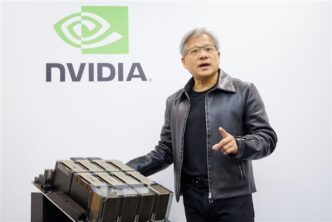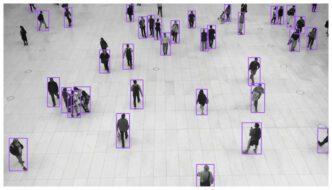Huawei is officially stepping into the AI hardware spotlight. The company is now shipping its Ascend 910C AI chip at scale across China, positioning itself as the country’s best hope to replace Nvidia — just as U.S. sanctions make that need urgent.
Back in August 2024, Huawei signaled its plan to launch a new processor that could rival Nvidia’s high-performance GPUs. Eight months later, mass shipments of the 910C are underway, with broader delivery expected as early as next month. According to sources cited by Reuters, some orders have already been fulfilled.
A Timely Challenger to Nvidia
Huawei’s move comes at a moment of strategic opportunity. The U.S. government recently tightened export restrictions on Nvidia’s H20 chip, the company’s main offering for the Chinese market. With those shipments stalled, Chinese tech giants are quickly turning to domestic suppliers — and Huawei is ready to meet demand.
The Ascend 910C is built for training and running large AI models. It’s a powerful step up from Huawei’s previous chips, fusing two 910B processors into one advanced unit. Early benchmarks suggest it delivers around 800 TFLOP/s in FP16 compute and hits 3.2 TB/s in memory bandwidth — putting it at roughly 80% of Nvidia’s H100 performance.
That may not sound like a knockout punch, but in a market suddenly starved of U.S. chips, it’s more than enough.
Built at Home, Ready to Scale
Huawei developed the 910C on a 7nm process. The company relied heavily on Taiwan’s TSMC for initial supply, but Chinese foundry SMIC is now stepping in to expand domestic production. Combined, the two are expected to help Huawei hit its 2025 production targets: 100,000 units of the 910C, plus another 300,000 of the older 910B chips.
And Huawei isn’t just shipping chips. It’s building full systems too. Its CloudMatrix 384 AI cluster bundles 384 of the new chips and delivers 300 petaflops of computing power — well above the 180 petaflops offered by Nvidia’s GB200 NVL72 cluster. While Huawei’s system draws more energy, it’s a trade-off Chinese firms are willing to make, given their lower electricity costs and limited chip options.
U.S. Controls Create an Opening
The timing of Huawei’s rise couldn’t be more precise. The Biden administration’s latest export rules now require Nvidia to obtain licenses for H20 chip sales to China. That has thrown tech firms like Baidu, ByteDance, and Tencent into scramble mode.
Huawei, already testing the 910C with these firms last year, has quickly stepped in. Analysts believe the move marks a major turning point. Paul Triolo of Albright Stonebridge Group says the 910C could become the go-to chip for Chinese AI developers. Nori Chiou from White Oak Capital agrees, noting the sanctions are effectively pushing Nvidia’s customers into Huawei’s arms.
Nvidia Feels the Heat
The consequences for Nvidia are real. After the latest round of export restrictions, Nvidia’s stock dropped by more than 3%. It also recorded a $5.5 billion charge related to lost H20 sales. CEO Jensen Huang admitted that revenue from China is now half what it used to be — and he openly acknowledged Huawei’s growing threat.
While Nvidia remains dominant globally, its grip on China is loosening fast.
China’s Long Game in AI Hardware
Huawei’s ambitions go beyond filling a gap. The 910C plays a key role in China’s strategy to reduce reliance on foreign AI hardware. And it’s not just about hardware — the company is also ramping up its software platform to rival Nvidia’s CUDA.
Although Huawei still lags behind on developer tools, it’s closing the gap. Partnerships with companies like DeepSeek are helping improve its software ecosystem, and some industry experts now see Huawei as a legitimate long-term rival in global AI infrastructure.
Still, there are concerns.
Not Without Challenges
Huawei’s approach, some critics argue, leans too heavily on stacking chips rather than maximizing efficiency. That increases both system size and power usage. Others remain cautious, calling the 910C “PowerPoint silicon” until it proves itself with large-scale adoption and consistent real-world performance.
Another potential risk is supply chain pressure. Huawei still depends on chipmakers like TSMC for some components. If the U.S. expands restrictions, production could stall.
The Bigger Picture
But for now, Huawei is seizing its moment. The 910C might not beat Nvidia on every technical front, but it’s competitive — and, crucially, available. In a market where access matters more than specs, that gives Huawei a clear advantage.
If the company can strengthen its domestic supply chain, improve software tools, and deliver consistent performance, this moment might be more than a blip. It could signal the beginning of China’s AI chip independence — and a realignment in global AI hardware leadership.













